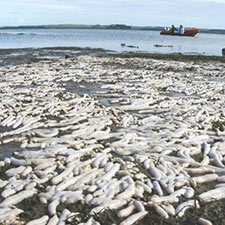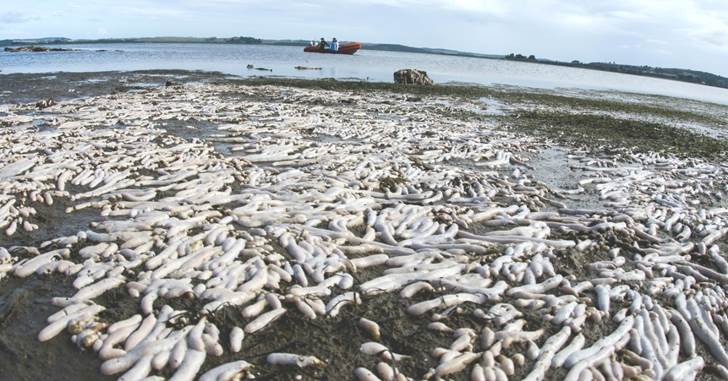 Australian droplet tunicate
Australian droplet tunicate
Common name: Australian droplet tunicate or Eudistoma sea squirt
Botanical name: Eudistoma elongatum
Management programme: Exclusion
Where is it originally from?
Australian droplet tunicate is a sea squirt that forms long, cylindrical tubes. Each of these tubes is an individual which can clump together to form dense colonies.
It was first reported in New Zealand in 2005 and by the summer of 2007-2008 it could be widely found in Northland.
Why is it a pest?
- Australian droplet tunicates grow rapidly, quickly smothering beaches, rocks, and tide pools.
- It fouls boats and other marine structures.
- They compete with native species for both space and food.
Where is it found?
- It prefers submerged habitats just below the waterline but can be found out of the water for periods during low tide.
- The Australian droplet tunicate can attach to the hulls of boats and other hard surfaces such as buoys and wharf piles. If fouled boats travel throughout New Zealand the larvae can be dispersed wherever they go.
- The Australian droplet tunicate is not known to be established in the Bay of Plenty but is found in Northland and Auckland.
What does it look like?
- They are usually cream or white with light brown specks that become orange when reproductive.
- Each individual sea squirt is generally 5-30cm.
- Colonies are impacted by water temperature and will decrease in size over winter and then rapidly re-grow in summer.
What are the rules?
Exclusion
Exclusion pests are not known to be present/established in the Bay of Plenty region. The Bay of Plenty Regional Council is responsible for managing new incursions into the region. Action may be required from landowners or occupiers to support a control operation.
What are the rules around keeping boat hulls clean and preventing the transporting of Marine pests?
- Keep your boat bottom and any niche areas clean (no more than light slime, all the time).
- Keep your anti-fouling paint fresh - manufacturers usually recommend replacement every 1-2 years.
- Check your hull before you travel to a new area, every time.
- If your boat is heavily fouled, haul it out. Cleaning underwater will only spread any pests that may be hiding on there.
To prevent the spread of marine pests, Bay of Plenty marinas require visiting vessels to have been recently cleaned. That means:
- Antifouled in the last six months.
- Lifted and washed in the last month.
Check with the marina what proof is required. Some high-risk vessels may be subject to additional marina requirements.
Tauranga marinas have their own hull hygiene rules for visiting vessels. Plan ahead - contact Tauranga Bridge Marina on 07 575 8264 or Tauranga Marina on 07 578 8747 for details.
How do you get rid of it?
If you find Australian droplet tunicate please contact the Bay of Plenty Regional Council on 0800 STOP PESTS (0800 786 773).

Image credit: NIWA.
